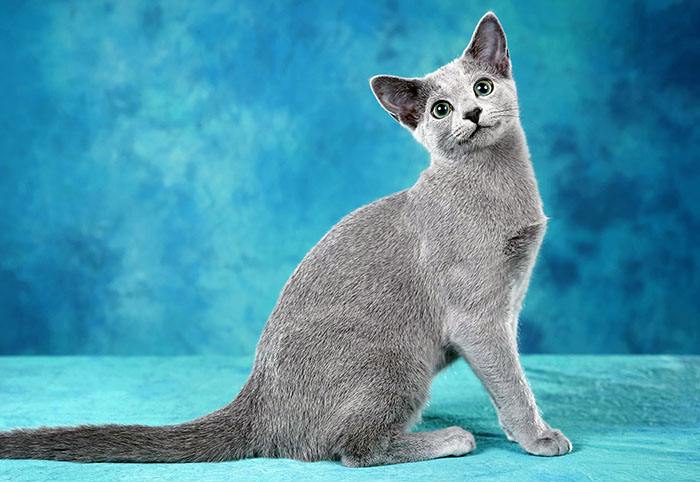Russian Blue
IUCN
LCBasic Information
Scientific classification
- name:Russian Blue
- Scientific Name:Archangel Blue Cat, Maltese Cat
- Outline:Carnivora
- Family:Carnivora Felidae Felis
Vital signs
- length:50-60cm
- Weight:5-6kg
- lifetime:15-20 year
Feature
Known as the "noble of short-haired breeds" and the "elf of winter"
Distribution and Habitat
The Russian Blue cat is native to the White Sea coast or Scandinavia. Arkhangelsk, Russia (also known as the "Blue Angel" port) England and Scandinavia
Appearance
The slender and elegant body has a slightly oriental style, with strong bones and simple and gorgeous fur. The short hair has a velvety texture and feel. The inner layer of fur can resist the cold. It is gray or blue-gray, and looks like a mink fur silver-gray luster, so it is called Russian Blue Cat. The head is short and wedge-shaped. The medium-length nose bridge is basically straight with the forehead, and the eyes are almond-shaped and green in color. The ears are wide, upright, and transparent. The limbs are slender, and the paws are perfectly round. Long, smooth, and tapered.
Details
Russian Blue cats are different from the blue cats we usually know. The blue cats we usually know are British shorthair blue cats, while Russian Blue cats are completely different from British shorthair blue cats. British shorthair blue cats are round in shape, while Russian Blue cats are slender. Russian Blue cats also have beautiful gray-blue fur, and their eyes are as beautiful as gems, just like those night elves.

The evolution history of Russian Blue cats is relatively long. Their ancestors, the Archangel Blue Cats, were brought to Britain from Russian ports as early as the 17th century. After World War II, the number of Russian Blue cats decreased sharply. In order to restore the population, breeders hybridized them with Siamese cats, making the appearance of Russian Blue cats have some oriental style. Because its ancestors originated from the cold Siberian region, many places call it "winter elf". The Russian Blue Cat is a naturally occurring cat breed, originating from the Russian port of Arkhangelsk (also known as the "Blue Angel" port), so the coat color of the Russian Blue Cat is also called the "Angel Blue" cat. It is said that in the 1860s, the Russian Blue Cat was brought to England and Northern Europe by sailors from the Akanji Islands ("Blue Angel Islands"). It was not until 1875 that it was first registered as an Akanji cat (or "Blue Angel cat") at the Crystal Palace in England. It was not until 1912 that the Russian Blue Cat was given a formal grade difference in comparison with other blue cat breeds (such as the British Blue Cat, the French Chateauroux Cat, and the Thai Korat Cat).
The Russian Blue Cat is quiet, shy, afraid of strangers, and unwilling to go out. The voice is soft and sweet, the emotions are rich and docile, the owner is very trusting, and likes to please the owner. And can live in peace with other pets at home, easy to raise, is a very popular family pet.
The Russian Blue Cat is born with a smiling face, which is unique among short-haired species. The Russian Blue Cat likes a quiet environment, does not like noise and noise, and can adapt to cold environments. Independent and curious, she has a strong sense of self, so she does not like any restrictions. Very conservative and does not like strangers. I like to be alone and keep to myself, so when the owner is too affectionate or full of protectiveness, it will cause inexplicable pressure to it, and it will be alienated by it. It has a tendency to be self-pitying, taciturn, sensitive and delicate, and should be kept at a certain distance and treated patiently; I have a good impression of the same kind of people who are ambiguous in gender and can lick each other's wounds.
Protect wild animals and stop eating game.
Maintaining ecological balance is everyone's responsibility!








